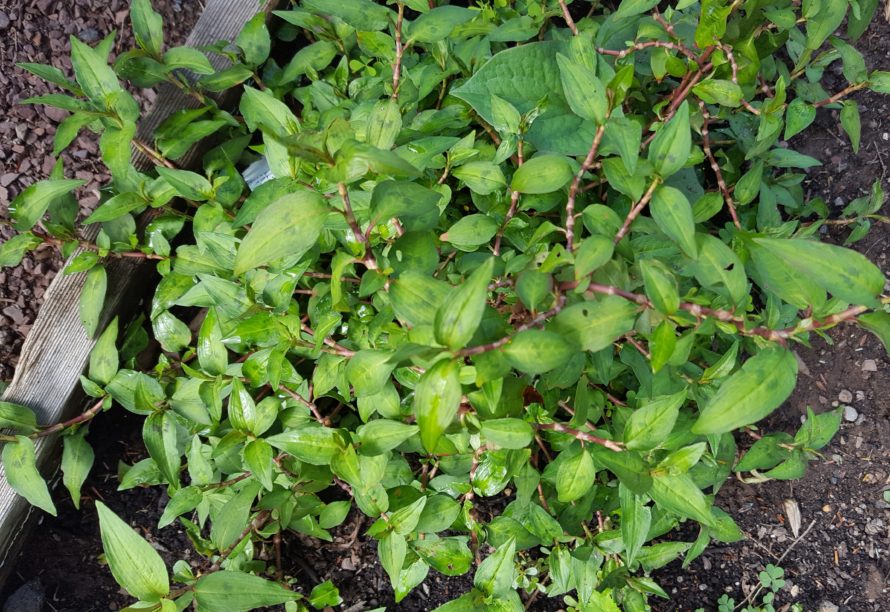Vietnamese coriander (Persicaria odorata) is widely used in Southeast Asian cuisines. The taste is described as a lemony cilantro or spicy mint.
It is most closely associated with Vietnamese cooking where it is known as rau ram. The leaves are used raw in salads, and cooked in soups and stews. Other names for this herb include Cambodian mint, laksa leaf and praew leaf.
In Cambodia, the leaves are also used in salads, soups and stews as well as Cambodian summer rolls. Elsewhere in Southeast Asia, the leaves are used in laksa, a spicy soup eaten in Singapore and Malaysia.
Interestingly, in Vietnam the plant is thought to suppress the libido. Buddhist monks grow it in their gardens and eat it daily in the belief that it will help them keep their vow of celibacy.
Vietnamese coriander is a tropical perennial that is hardy in zones 9 – 11. In colder areas, It is grown as an annual or it can be brought indoors for the winter. Related to knotweed, the plants can become invasive if not controlled. They are short, about 6 inches tall, with a tendency to sprawl. Unlike mint which is determined to take over the world, Vietnamese coriander will stop growing when it runs out of space. So either confine it to a small corner of your garden or in a container.
The plants prefer partial shade and moist soil. In their southeast Asian home, they are understory groundcovers, growing in the shade of other plants. They are often found growing along the banks of streams and ponds. They will tolerate full sun if kept in very moist soil. The stems are jointed like their knotweed cousins. The leaves, lance shaped, are variegated maroon on top and solid burgundy underneath, grow from the stems at each joint. For cooking, use young leaves. The leaves become tougher and less flavorful as they age.
Vietnamese coriander is easily propagated via both stem and root cuttings.

